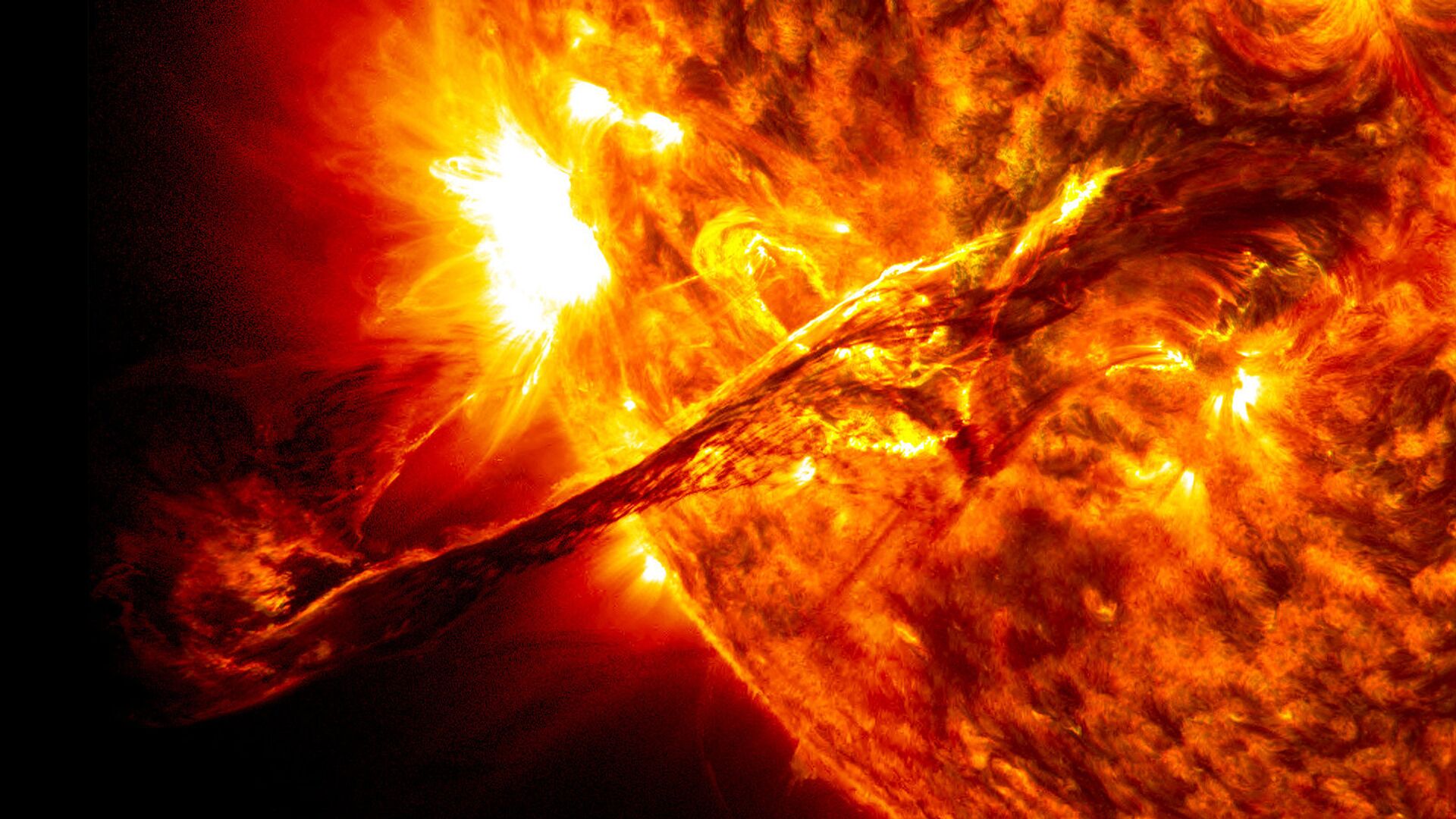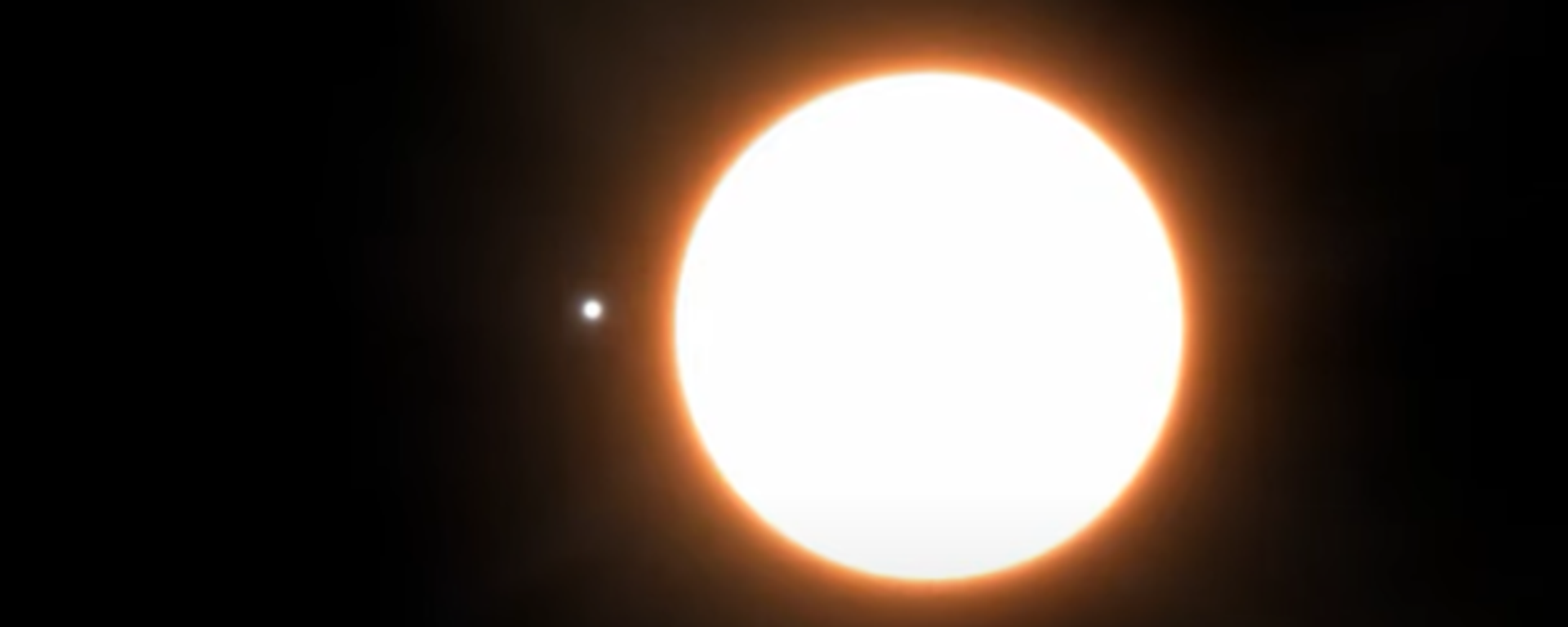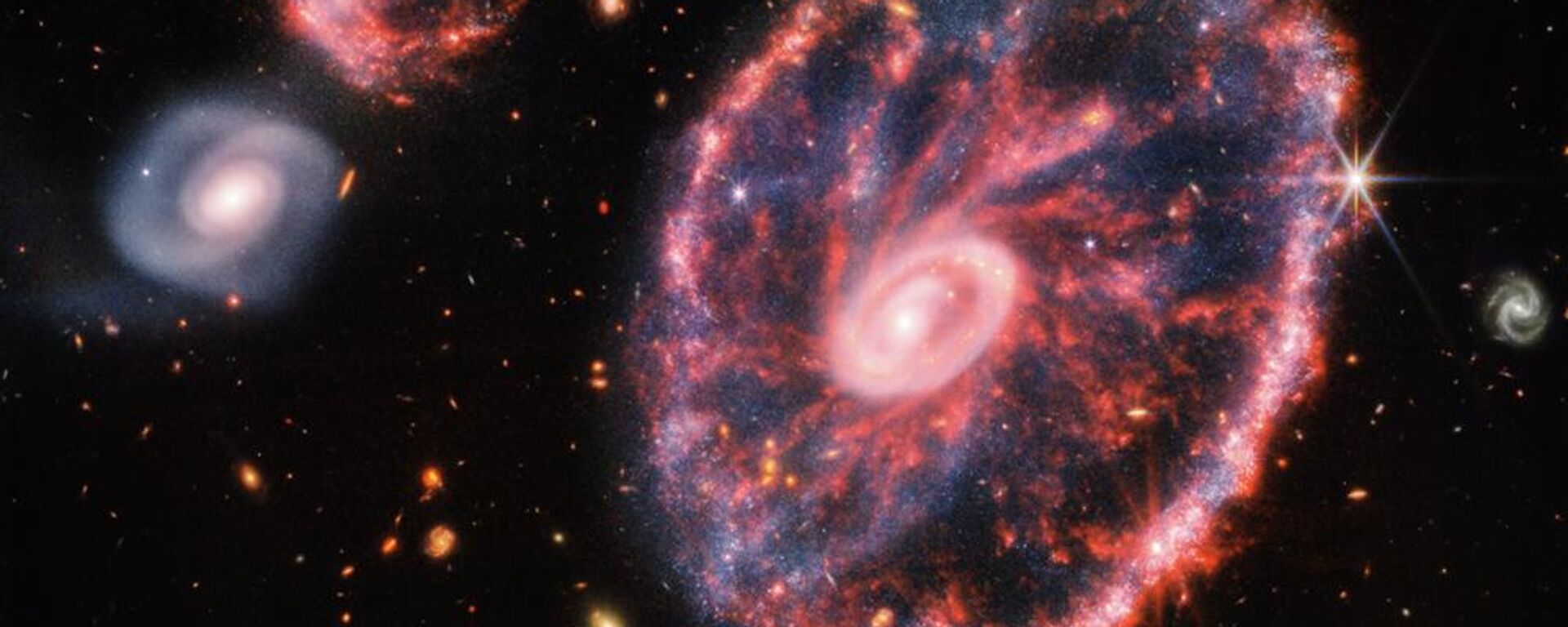https://sputnikglobe.com/20230717/cannibal-coronal-mass-ejection-to-hit-earth-tuesday-cause-geomagnetic-storm-1111951993.html
'Cannibal' Coronal Mass Ejection to Hit Earth Tuesday, Cause Geomagnetic Storm
'Cannibal' Coronal Mass Ejection to Hit Earth Tuesday, Cause Geomagnetic Storm
Sputnik International
An impending collision between a "cannibal" coronal mass ejection (CME) and Earth is expected to occur on July 18, potentially triggering a significant geomagnetic storm.
2023-07-17T22:43+0000
2023-07-17T22:43+0000
2023-07-17T22:41+0000
beyond politics
science & tech
cme
national oceanic and atmospheric administration (noaa)
space
space exploration
https://cdn1.img.sputnikglobe.com/img/106424/83/1064248306_0:0:1600:900_1920x0_80_0_0_edf8f503e25fad08417c5604ba38cb85.jpg
An impending collision between a "cannibal" coronal mass ejection (CME) and Earth is expected to occur on July 18, potentially triggering a significant geomagnetic storm. The unique CME is the result of two coronal mass ejections merging into a massive cloud of magnetized plasma. A cannibal CME occurs when a second, faster CME catches up to an initial CME, engulfing it and creating a single, larger wave of plasma. In this case, the collision is the result of a surprise "dark eruption" and another CME that originated from different sunspots.Although individual CMEs are of moderate strength, their combined size and speed increase the likelihood of a significant geomagnetic storm, potentially classified as a G1 or G2 level disturbance—the highest classes for a geomagnetic storm.Cannibal CMEs are rare phenomena, requiring specific alignment and speeds of successive CMEs. However, there have been several instances of cannibal CMEs in recent years, including one in November 2021 that triggered a major geomagnetic storm.Earth has already experienced five G1 or G2 geomagnetic storms this year, including the most potent storm in over six years. These storms have elevated the temperature of the thermosphere - the second-highest layer of Earth's atmosphere, to its highest levels in more than two decades. Additionally, the number of sunspots has been steadily increasing, reaching the highest total in nearly 21 years in June.
https://sputnikglobe.com/20230711/astronomers-discover-shiniest-exoplanet-with-reflective-metal-clouds-1111806386.html
https://sputnikglobe.com/20230706/webb-telescope-finds-sign-ancient-galaxies-were-seeded-with-supernova-space-dust-1111698428.html
Sputnik International
feedback@sputniknews.com
+74956456601
MIA „Rossiya Segodnya“
2023
News
en_EN
Sputnik International
feedback@sputniknews.com
+74956456601
MIA „Rossiya Segodnya“
Sputnik International
feedback@sputniknews.com
+74956456601
MIA „Rossiya Segodnya“
coronal mass ejection cme, space, geomagnetic storm, why geomagnetic storms happen, what is the reason of geomagnetic storm, cannibal cme, what is cme, what is coronal mass ejection, solar activity, solar maximum
coronal mass ejection cme, space, geomagnetic storm, why geomagnetic storms happen, what is the reason of geomagnetic storm, cannibal cme, what is cme, what is coronal mass ejection, solar activity, solar maximum
'Cannibal' Coronal Mass Ejection to Hit Earth Tuesday, Cause Geomagnetic Storm
The US National Oceanic and Atmospheric Administration (NOAA) Space Weather Prediction Center has simulated the collision, indicating a high probability of it reaching Earth early this week.
An impending collision between a "cannibal" coronal mass ejection (CME) and Earth is expected to occur on July 18, potentially triggering a significant geomagnetic storm. The unique CME is the result of two coronal mass ejections merging into a massive cloud of magnetized plasma.
CMEs are fast-moving clouds of solar radiation and magnetized plasma that can cause disturbances in Earth's magnetic field when they collide with our planet. These disturbances can lead to partial radio blackouts and vibrant aurora displays.
A cannibal CME occurs when a second, faster CME catches up to an initial CME, engulfing it and creating a single, larger wave of plasma. In this case, the collision is the result of a surprise "dark eruption" and another CME that originated from different sunspots.
Although individual CMEs are of moderate strength, their combined size and speed increase the likelihood of a significant geomagnetic storm, potentially classified as a G1 or G2 level disturbance—the highest classes for a geomagnetic storm.
Cannibal CMEs are rare phenomena, requiring specific alignment and speeds of successive CMEs. However, there have been several instances of cannibal CMEs in recent years, including one in November 2021 that triggered a major geomagnetic storm.
The occurrence of cannibal CMEs suggests the solar maximum, the peak of the sun's approximately 11-year solar cycle, is approaching. During this period, solar activity intensifies, resulting in more sunspots and solar flares.
Initially predicted for 2025 as a weak solar maximum, recent reports suggest the end of the current phase may arrive sooner and be more powerful than anticipated.
Earth has already experienced five G1 or G2 geomagnetic storms this year, including the most potent storm in over six years. These storms have elevated the temperature of the thermosphere - the second-highest layer of Earth's atmosphere, to its highest levels in more than two decades. Additionally, the number of sunspots has been steadily increasing, reaching the highest total in nearly 21 years in June.




